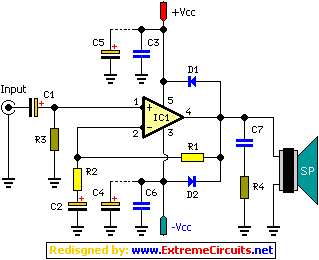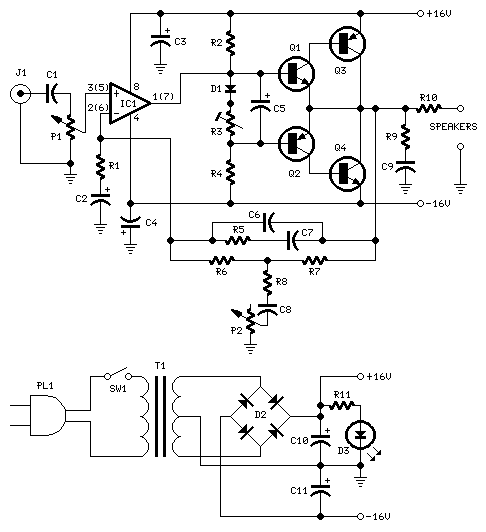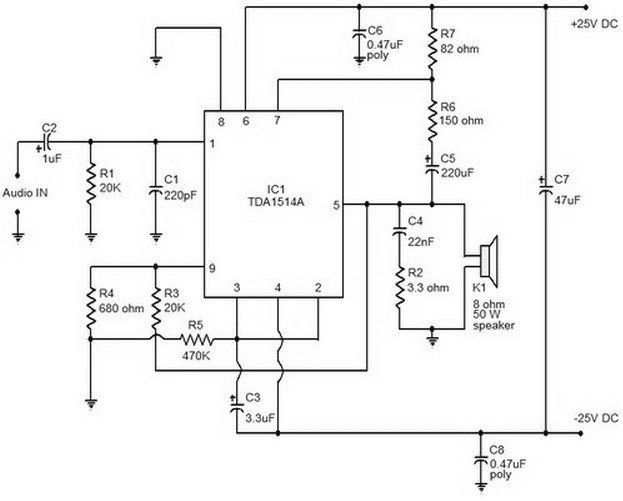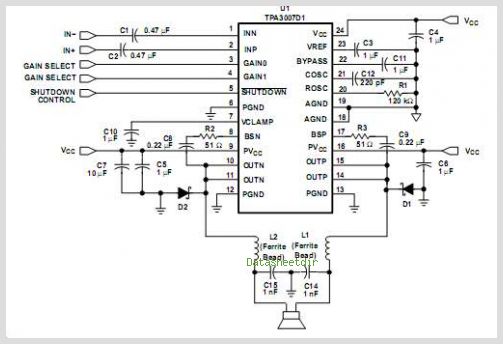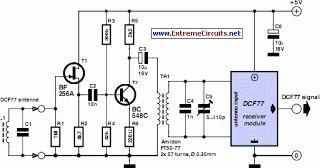
magnet cartridge amplifier
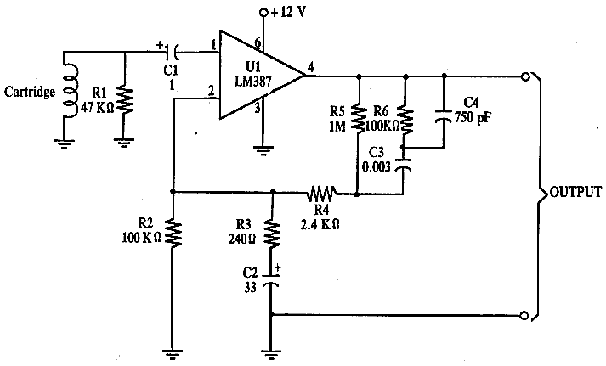
A magnetic pickup from an old record player can function effectively as a pressure and vibration sensor. By replacing the needle with a thin metal plate (copper from a PCB is suitable), an excellent touch sensor can be created. This circuit can be used to amplify the signal before feeding it into a sound level detector.
The described setup utilizes a magnetic pickup, which is originally designed to convert mechanical vibrations from a vinyl record into electrical signals, as a versatile sensor. The conversion process involves detecting changes in magnetic fields caused by physical pressure or vibrations on the metal plate.
To implement this circuit, the following components are recommended:
1. **Magnetic Pickup**: The core component that senses vibrations and pressure changes. It typically consists of a magnet and a coil of wire that generates a voltage when the magnet moves relative to the coil.
2. **Metal Plate**: A thin plate of copper, ideally sourced from a PCB, serves as the interface for touch or pressure. This plate should be securely mounted above the magnetic pickup to ensure proper functioning.
3. **Amplification Circuit**: To enhance the weak signals generated by the magnetic pickup, an operational amplifier (op-amp) can be employed. The op-amp should be configured in a non-inverting mode to increase the sensitivity of the sensor. Resistors can be used to set the gain of the amplifier, allowing for adjustments based on the expected signal strength.
4. **Sound Level Detector**: The amplified output from the op-amp can be connected to a sound level detector circuit. This detector can be a simple LED-based indicator or a more complex microcontroller-based system that can analyze the signal and provide outputs based on the detected sound level.
5. **Power Supply**: Ensure that the circuit is powered adequately, typically using a low-voltage DC supply that is compatible with the op-amp and any additional components.
The entire assembly should be housed in a suitable enclosure to protect the components from environmental factors while allowing the metal plate to remain accessible for touch or pressure applications. This configuration can be utilized in various applications, such as creating interactive sound installations or enhancing pressure-sensitive interfaces in electronic devices.a magnetic pickup from an old record player can make a great pressure, and vibration sensor. replace the needle with a plate of thin metal (copper off a pcb is good, ) and you`ve got an incredible touch sensor. use this circuit to amplify the circuit before passing it into sound level detector. 🔗 External reference
The described setup utilizes a magnetic pickup, which is originally designed to convert mechanical vibrations from a vinyl record into electrical signals, as a versatile sensor. The conversion process involves detecting changes in magnetic fields caused by physical pressure or vibrations on the metal plate.
To implement this circuit, the following components are recommended:
1. **Magnetic Pickup**: The core component that senses vibrations and pressure changes. It typically consists of a magnet and a coil of wire that generates a voltage when the magnet moves relative to the coil.
2. **Metal Plate**: A thin plate of copper, ideally sourced from a PCB, serves as the interface for touch or pressure. This plate should be securely mounted above the magnetic pickup to ensure proper functioning.
3. **Amplification Circuit**: To enhance the weak signals generated by the magnetic pickup, an operational amplifier (op-amp) can be employed. The op-amp should be configured in a non-inverting mode to increase the sensitivity of the sensor. Resistors can be used to set the gain of the amplifier, allowing for adjustments based on the expected signal strength.
4. **Sound Level Detector**: The amplified output from the op-amp can be connected to a sound level detector circuit. This detector can be a simple LED-based indicator or a more complex microcontroller-based system that can analyze the signal and provide outputs based on the detected sound level.
5. **Power Supply**: Ensure that the circuit is powered adequately, typically using a low-voltage DC supply that is compatible with the op-amp and any additional components.
The entire assembly should be housed in a suitable enclosure to protect the components from environmental factors while allowing the metal plate to remain accessible for touch or pressure applications. This configuration can be utilized in various applications, such as creating interactive sound installations or enhancing pressure-sensitive interfaces in electronic devices.a magnetic pickup from an old record player can make a great pressure, and vibration sensor. replace the needle with a plate of thin metal (copper off a pcb is good, ) and you`ve got an incredible touch sensor. use this circuit to amplify the circuit before passing it into sound level detector. 🔗 External reference
